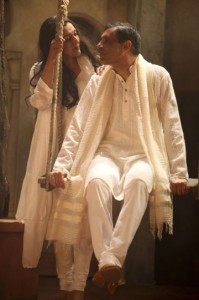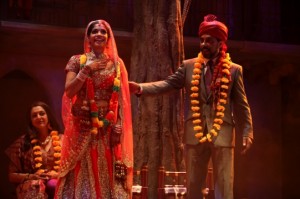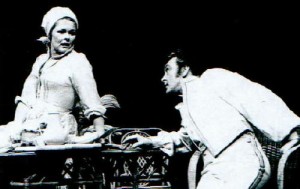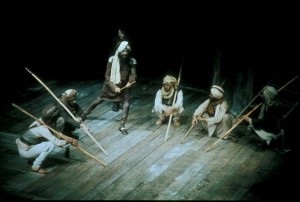What are we learning from the World Shakespeare Festival?
A few weeks ago Sonia Massai headed a panel entitled Global Shakespeares. In her subsequent post on the RSC’s MyShakespeare site she says “‘Global Shakespeares’ can only be understood in relation to the very specific sets of circumstances and traditions within which specific productions are directed and produced.”
Massai knows only too well that performance histories traditionally concentrate on UK productions. Shakespeare’s Globe’s G2G festival earlier in the year brought productions to the UK that were entirely the creation of the country and culture that made them. They were performed in their native languages, with summaries in English being provided forLondon audiences. This year has been a unique opportunity for Britain to see what the rest of the world is doing with “our” Shakespeare.
In the past week the RSC has opened a different sort of production as part of the World Shakespeare Festival. With an all-Asian cast Much Ado About Nothing is led by Meera Syal and Paul Bhattacharjee as the sparring couple Beatrice and Benedick. It’s being described as an Indian production, but as director Iqbal Khan comes from Birmingham and Meera Syal fromWolverhampton, and with several other well-known TV actors in the cast, it’s more complicated than that.
The play is set in modern Delhi, as seen through Anglo-Indian eyes. When it was announced, we expected it to feature Bollywood-style singing and dancing, great music and masses of colour. How could it not? And the current production certainly doesn’t disappoint on that score.
In an interview the director explains how using an Indian setting helps to explain some elements of the play that don’t easily fit in modern Britain: “the relationship between masters and their servants… the idea of bloodlines… the formality of engagements and …courtship rituals”.
The concept works, but sometimes the execution points up the director’s lack of experience on the Courtyard stage, the gulling scenes in particular. In Beatrice’s scene, it’s a neat idea for Hero to be gossiping to Ursula on her mobile, but with Hero out of sight much of the time and Beatrice concealed from part of the audience it leaves the stage almost empty. In the parallel scene in which Benedick is fooled about Beatrice’s love for him, Benedick dodges around the set, finally appearing at the very highest level, invisible to part of the audience. Not being able to see how Beatrice and Benedick react to the news they overhear undermines both scenes.
The wedding scene is more assured, all the more painful for the elaborate preparations made for the event and the dazzling costume Hero wears when she is disowned by Claudio. With such assured performers as Syal and Bhattacharjee the potential for interplay between Beatrice and Benedick will grow as the production matures: at the moment their scenes lack flair and both seem vocally underpowered. The Courtyard’s a stage on which actors can take the audience into their confidence and their scenes will greatly improve once they’ve got the measure of it. There’s lots of information about the production here.
In his Guardian review Michael Billington suggested that “veteran playgoers” might remember that back in 1976 the RSC produced another Indian production of the play. They did indeed, and the differences between those productions eloquently highlights the changes in British society.
In John Barton’s production the main characters were living in a garrison town, part of the nineteenth-century British Raj. It wasn’t glamorous, an Indian setting simply suggested by a few drapes on the “Wooden O” set used for all the productions that year. The dislocation of the British characters away from their own country made it easier to believe in the misjudgements on which the plot depends.
Judi Dench and Donald Sinden were a mature couple, their reluctant romance both touching and funny. They drew on years of experience of both Shakespeare and the RSC: in the same season Dench played Goneril to Sinden’s King Lear. Irving Wardle commented that in Much Ado About Nothing they “offered simply two definitive performances operating in perfect partnership”.
The point of greatest difference, though, was in the playing of the Watch. In 1976 Dogberry was played by John Woodvine, dressed as a Sikh. The watch, all white actors “blacked up”, were drawn from the population of the town, Dogberry hugely proud of being in charge. His linguistic errors were caused by his “trying to follow the alien procedures of the British Raj” and hence provided a “plausible analogue to the procedural confusion of Elizabethan policemen” as described by Shakespeare.
Shakespeare continues to cross barriers both of time and place. The World Shakespeare Festival is showing how the world’s playwright can be reinterpreted by every generation and culture.





